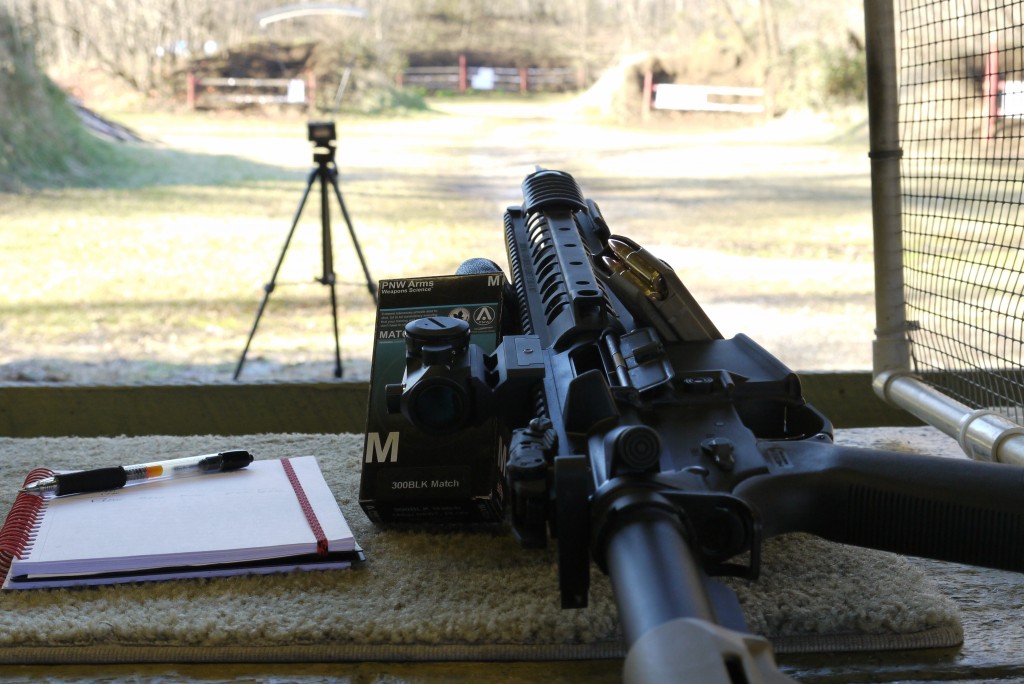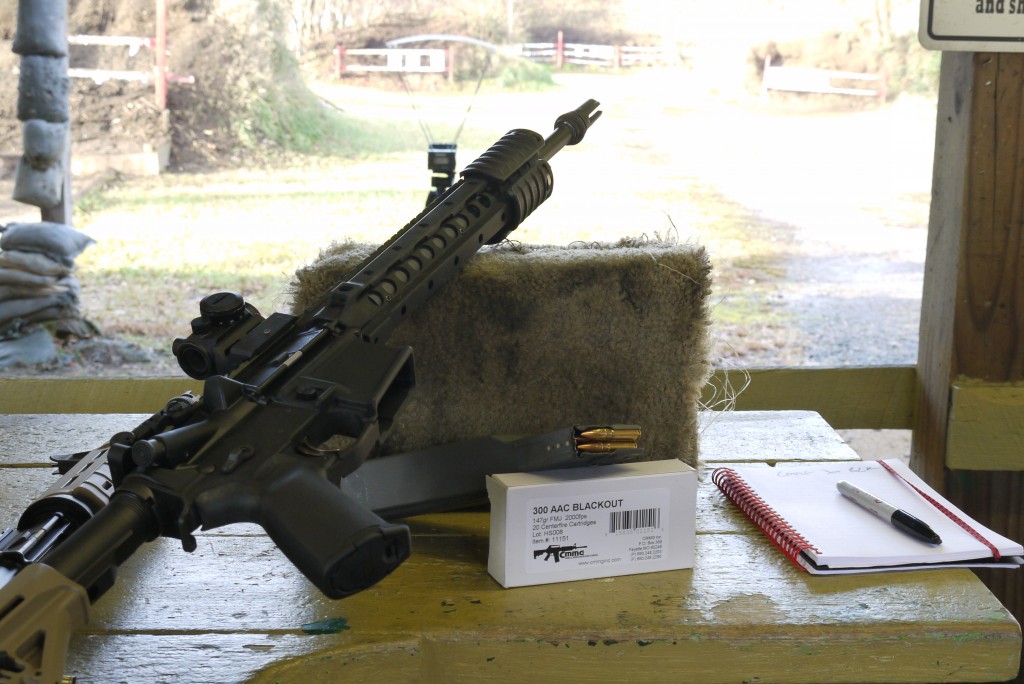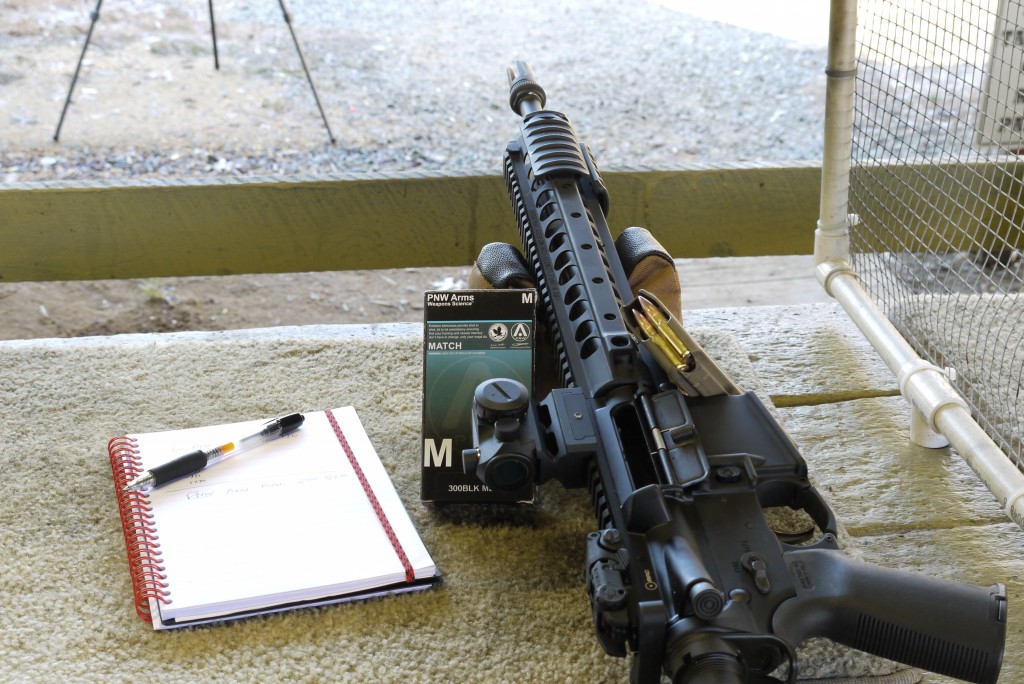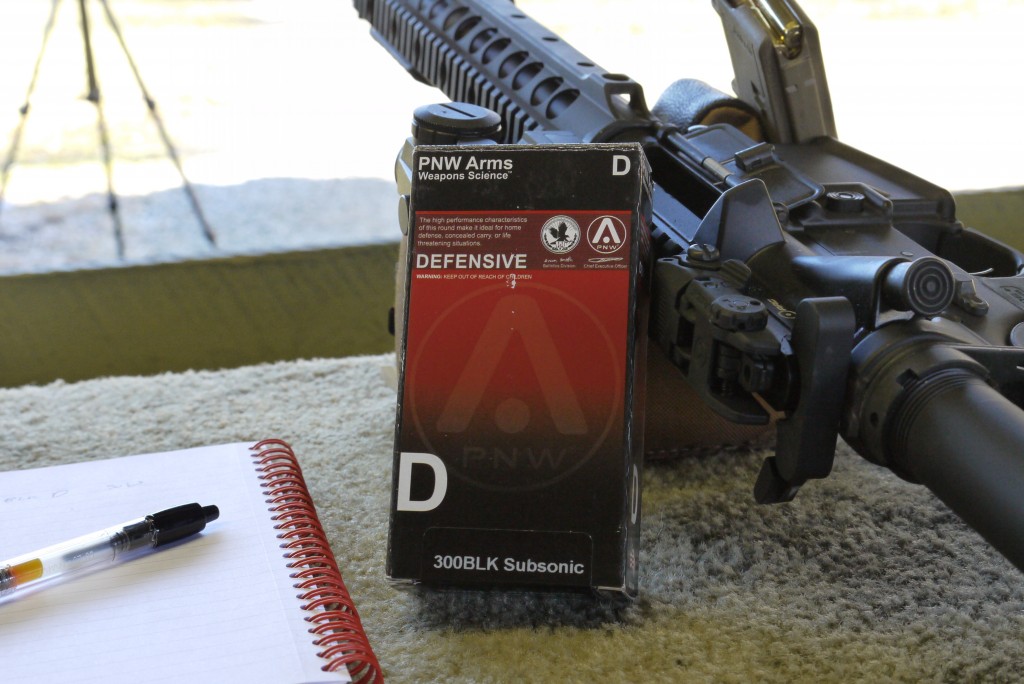Been a while since we did one of these, isn’t it? Thought we gave up or something? Nope, we just ran out of willing victims and needed to re-stock our supplies of voluntarily provided ammunition. I’ve got a couple more to add to the .223 Rem and .308 Win lists, but first I want to start off a whole other category of ammunition being tracked to determine the most consistent brand available: .300 AAC Blackout.
Yup, .300 AAC Blackout — that funky round from the Advanced Armament crew that is slowly becoming a mainstream alternative caliber for the AR-15 platform. With all of the options available (and especially the proliferation of “match” ammo) I thought it would be good to put them to the test and figure out which ones are worth the money.
Speaking of testing, the procedure was laid out in the first one of these we ever published so read up for the technical mumbo jumbo. The only changes are that we have increased our sample size to 20 rounds (from an original 10 round sample) and the test rifle for .300 BLK will be a 16″ upper from Advanced Armament.
First up on the menu is CMMG’s .300 BLK offering. It was one of the first brands to make the ammo available (other than Remington), and it was actually reasonably priced. This is a 147 grain supersonic round that looks to be “military” spec (a little tarnished with sealed and crimped primers) rather than match grade, but is it consistent? Is it reliable in a competition? Inquiring minds need to know.
Next up is a relatively new company whose principles I can really get behind. PNW Arms is all about the science (“Weapons Science” is their tagline) behind ammunition and even provides an entire series of web pages that talks you through the various internal, external and transitional ballistics. Seriously, go read it. It’s worth your time. PNW Arms provided two flavors of ammunition to test (with a third on the way), the first one being a supersonic “match” round which pushes a 155 grain projectile downrange. The cartridges LOOK the part, bright and shiny with smooth edges, but do their polished exteriors mean more consistent loads?
Last on the list for today is PNW Arms’ Defensive loads. Part of the magic of .300 BLK is the ability to use supersonic or subsonic ammunition without having to change anything on the gun, and manufacturers are taking advantage of this by producing both subs and supersonic rounds. These are 220 grain subsonic rounds designed to take full advantage of a silencer, but alas mine is still in the shop waiting on paperwork.
While I have a minute (and before we get to the results) I wanted to comment on PNW’s box design. It’s simple, lets you know exactly what is inside, and keeps you from accidentally grabbing the supersonic rounds when you really needed the subs. It’s something I don’t think I’ve ever seen in ammunition packaging before and I like it, but that might just be the nerd inside.
And now to the results. As expected, the mean velocities for each box vary inversely to the weight of the bullet. Larger bullets go slower, lighter bullets go faster. It’s all got to do with back pressure and dwell time and such, which I’m sure will make an interesting article sometime soon but not right now. The subsonics are understandably a little “fat” in terms of their boxplot, but the two supersonic “match grade” offerings seem pretty much neck and neck. It’s hard to tell from here, so let’s skip to the interquartile range graph.
And there we have it, a (sort of) clear winner (NOTE: smaller is better for IQR). That IQR difference between CMMG and PNW’s match grade offerings is close enough to be sampling error (2 feet per second), so a rematch might be in order to determine the true king of the hill. Thankfully I have a spare box of PNW M ammo, but CMMG is being stingy on the supplies. We’ll see what the week brings. Oh, and the defensive ammunition has a bit of a spread on it but it’s no worse than the average spread for .308 Winchester and only a little worse than standard .223 Remington. Considering it’s a short range projectile to begin with I don’t see that being an issue.
Stay tuned for more .223 Remington and .308 Winchester ammunition consistency testing results. Science is AWESOME!
And now, the gigantic summary charts.
| Brand and Weight | Caliber | IQR | $/round |
| CMMG 147gr | .300 BLK | 26 | $0.78 |
| PNW M 155gr | .300 BLK | 28 | $0.90 |
| PNW D 220gr | .300 BLK | 54 | $1.08 |
| Brand and Weight | Caliber | IQR | $/round |
| Hornady Superformance Match 150gr SST |
.308 Win | 26 | $1.21 |
| Wilson Combat 168gr Sierra HPBT Match |
.308 Win | 28 | $1.99 |
| PMC Bronze 147gr FMJ BT |
.308 Win | 39 | $0.50 |
| SetPoint – 44gr Varget 150gr Hornady FMJ BT |
.308 Win | 52 | $1.74 |
| Prvi Partizan 150gr FMJ |
.308 Win | 54 | $0.82 |
| Remington “Managed Recoil” 125gr CORE-LOKT PSP |
.308 Win | 125 | $1.40 |
| Brand and Weight | Caliber | IQR | $/round |
| Wilson Combat 77gr Sierra HPBT Match |
.223 Rem | 19 | $1.52 |
| Wilson Combat 65gr Sierra SP BT |
.223 Rem | 21 | $1.52 |
| Hornady 75gr BTHP Match |
.223 Rem | 29 | $0.79 |
| CorBon 69gr HPBT |
.223 Rem | 30 | $1.18 |
| Winchester 64gr “Power Point” SP |
.223 Rem | 38 | $0.82 |
| Wolf 55gr FMJ |
.223 Rem | 40 | $0.21 |
| Federal XM193F 55gr FMJ |
.223 Rem | 40 | $0.32 |
| Pierce 55gr HP-BT |
.223 Rem | 42 | $?.?? |
| Nosler Varmint 40gr Ballistic Tip |
.223 Rem | 44 | $0.86 |
| Handloads – 20.8gr N-135 75gr Hornady HPBT Match |
.223 Rem | 49 | $?.?? |
| Handloads – 21gr IMR 3031 75gr Hornady HPBT Match |
.223 Rem | 52 | $?.?? |
| Winchester PDX-1 60gr SC-HP |
.223 Rem | 58 | $1.45 |
| American Eagle 55gr FMJ-BT |
.223 Rem | 68 | $0.30 |










As a veteran, I am amazed at how much is being spent on new rifles and amo. The USA has guns and ammo in stock going back to the Viet-Nam era. New composite rifles, new caibers. Law enforcement, government agencies think they need new state of the art systems, extreme rate of fire, what ever became of learning to shoot, not just waste lead? The .308 in the M-14 will outshoot anything the military has today within reason. The 300 AAC Blackout is an unnecessary gimmick system that does not fill one section of the shooting scene toay. I have older rifles with ammo (surplus match ammo and reloaded match rounds) that will outshoot anything connected with this 300 AAC Blackout system.
300 AAC gets you extra stopping power via a larger caliber, in the same light weight AR chassis, using the same magazines, with an investment in a blackout barrel and some ammo.
M14 is great, but I dont wanna lug around 9 pounds of rifle and spend the 1600 bucks to buy it. 300 is a compromise that makes sense for a lot of people.
I’ve had great luck with reloading it myself, with the help of brad @bradswarehouse. I’ve found it works out better, and is easier to get ahold of than going factory.
I appreciate what William says about the venerable 308. I love my Springfield M1A Scout. At the same time I think the 300 is a great option for the AR platform. The 308 is not an ideal caliber for an AR platform, but the 300BLK fills that gap perfectly imo. I think it’s great.
Has anyone had problems with PNW? I have a Daniel Defense .300 BLK DDM4-V5. I have shot almost exclusively PNW Match ammo out of it. I have shot 80 rounds out of it and to the best of my memory I have had, 5 failure to feeds, 6-7 failure to fire, (with an indent on the primer), and 5 rounds get stuck in the chamber, (2 of which when I did get them extracted the bolt carrier group pulled the casing off the bullet and left the bullet stuck in the barrel/chamber). I am taking it to a gun store this week to make sure it isn’t the gun. I do clean and lube properly, both skills I learned in the Marine Corps. So any input would be appreciated.
I get where William is coming from, however I chose the 300blk because it WAS different. I didn’t want something that’s been sitting around since Viet Nam. Gimmick or not, if you can afford it, it’s a fun sport.
Nick – thanks for the great review. I enjoyed the $hit out of it.
Comments are closed.